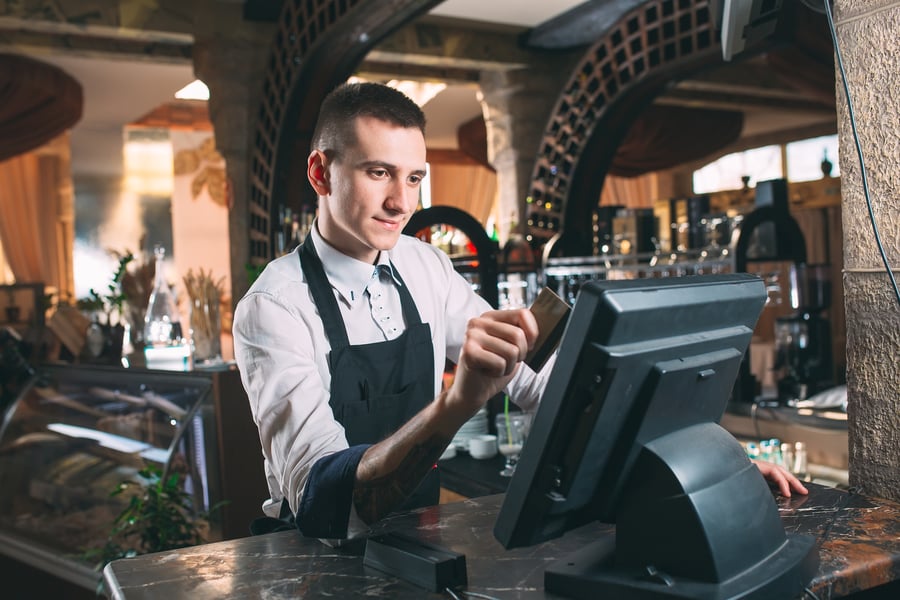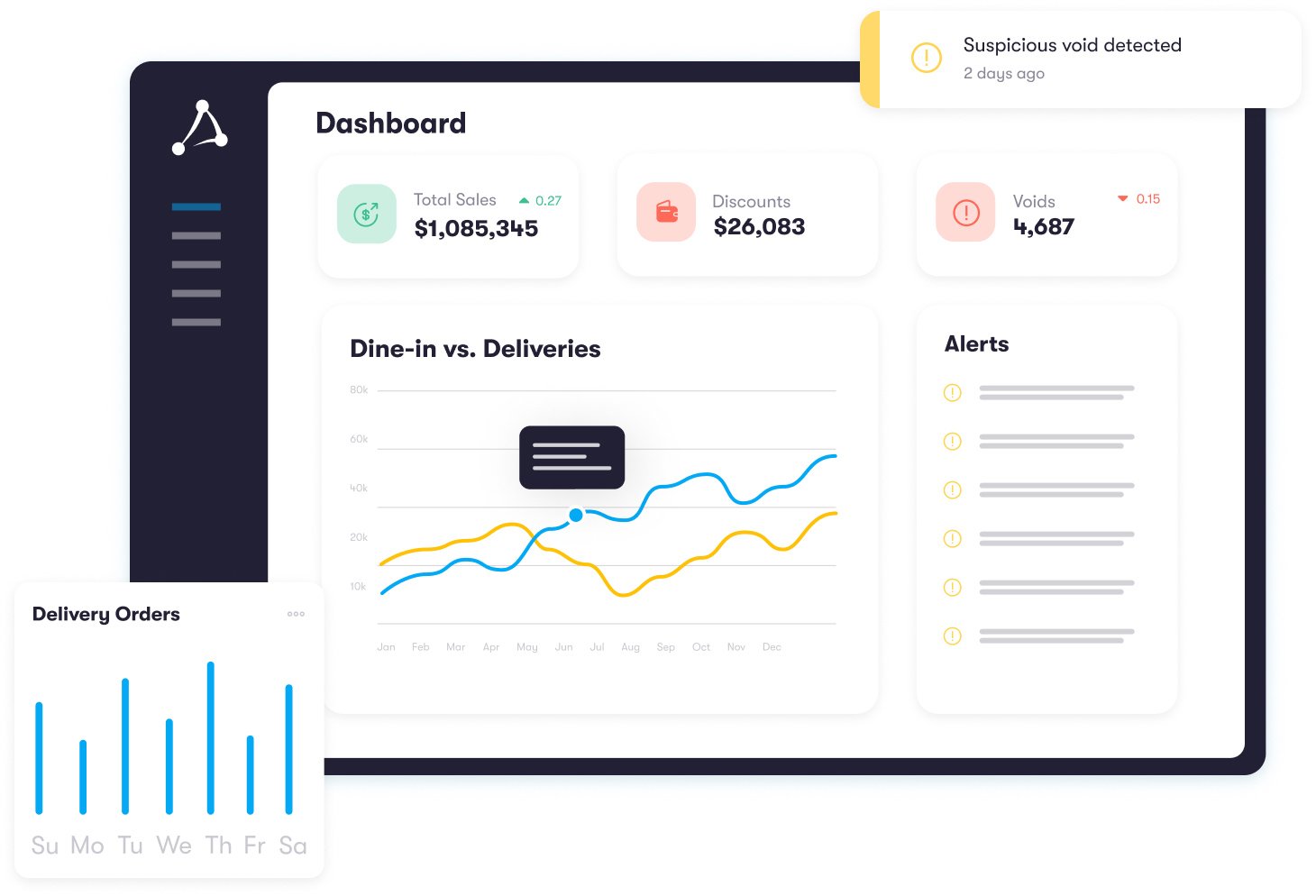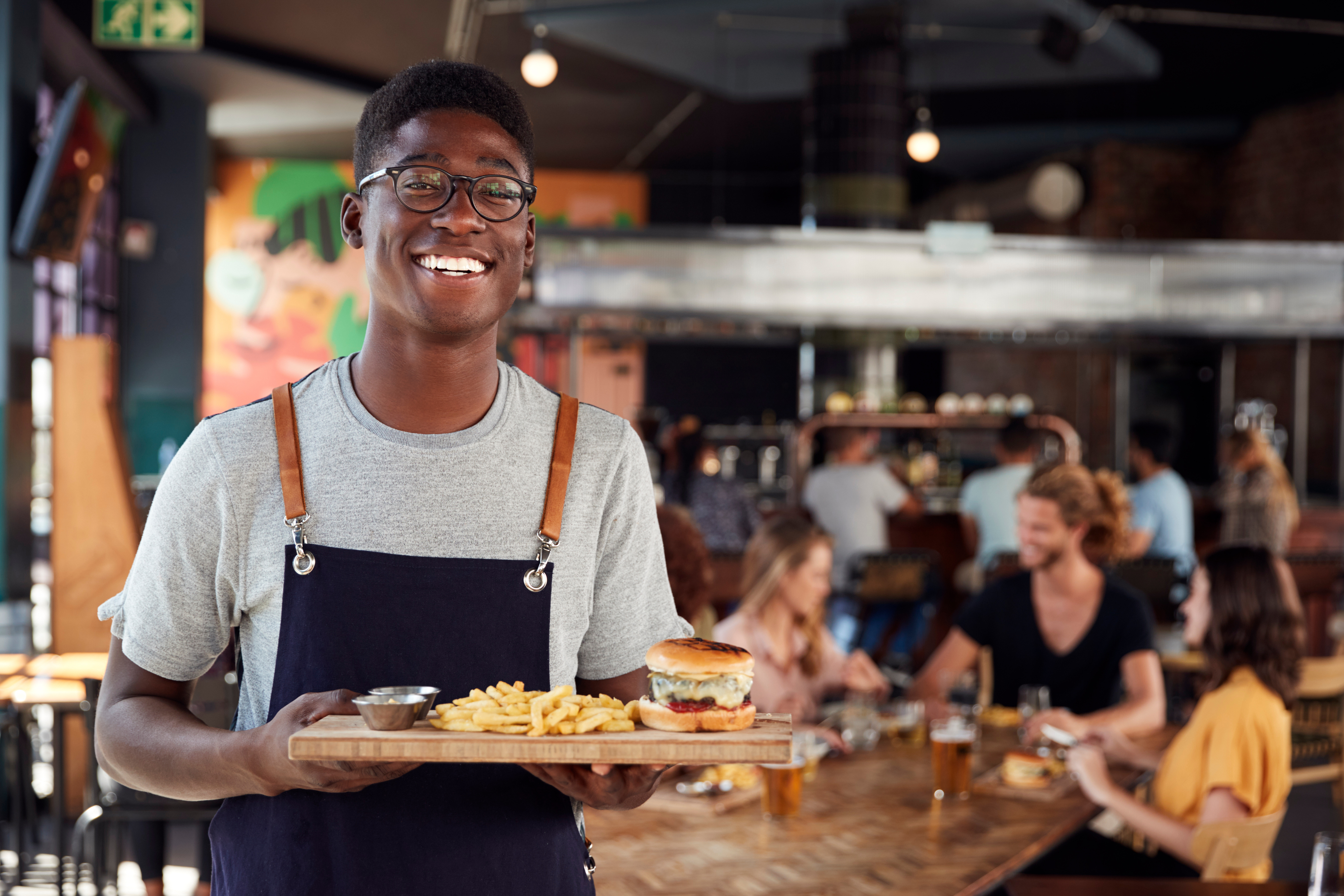How to Increase Restaurant Sales
Restaurant
Every owner and operator wants to know how to do one thing above all: increase sales. And for good reason, driving revenue is the lifeblood of every business; it drives growth and expands profits.
Restaurant operators all over the world face the same challenges when it comes to boosting profits - making sure they’re offering a great dining experience, delivering quality food and service, and having an efficient operations plan in place. But with so much competition out there, how can you give your restaurant the edge necessary to draw customers in?
Whether you’re operating a single location or hundreds of quick service restaurants (QSRs), there is always room for improvement when it comes to maximizing sales and profit. In this comprehensive article, we'll discuss specific strategies that can help you drive up your restaurant sales quickly—and sustainably. From leveraging technology like online ordering systems to optimizing your promotions and discounts, learn how to engage your current customers and attract new ones to drive revenue and increased profits at your restaurants.
Understanding Your Customers
Understanding your customers is the first and most crucial step towards increasing your restaurant sales. It's not just about knowing what they like to eat, but also understanding their dining habits, preferences, peak dining times, and even how they prefer to place their orders. With this knowledge, you can tailor your services, menu, and marketing strategies to meet their needs, ultimately driving up sales.
Gathering data about your customers doesn't have to be a daunting task. One straightforward way is through customer feedback. You can use comment cards, online reviews, or direct conversations to find out how your customers feel about your restaurant. But you’ll probably get your most valuable insights from leveraging your existing restaurant technology systems. Use your POS system to track sales trends, popular dishes, and busy times. If you offer online ordering or reservations, gather data about your customers' ordering habits. Social media platforms can also provide insights into what customers are saying about your restaurant. Use your loyalty program to track individual guest data to learn their behavior patterns and create personalized offers.
SaaS applications like Agilence Analytics can help you combine and analyze data from different restaurant sources to gain insights, all in one place. Remember, the more you know about your customers, the better you can serve them, leading to increased customer satisfaction and, consequently, higher sales.
Menu Optimization
Menu optimization is a powerful tool for boosting restaurant sales. Strategically pricing and placing items on your menu can subtly encourage customers to spend more. Start by understanding your food costs and setting prices that offer a good profit margin while still providing value to the customer. Consider using psychological pricing strategies, such as ending prices with .95 instead of .00, which can make prices seem lower than they actually are.
Placement of items on your menu also plays a significant role. Studies have shown that customers often look at the middle of the menu first, so consider placing your most profitable items there. Use high-quality photos and enticing descriptions to make these dishes even more appealing, and use graphics such as boxes or borders to draw attention to menu items. Don’t use dollar signs, leader dots, or column pricing (where prices line up), as these can cause guests to spend less. If you’re unsure, there is good academic research on the importance of fonts, color, and graphics for menus, such as this study in the International Journal of Hospitality Management.
Additionally, don't underestimate the power of regularly updating your menu. Keeping your offerings fresh and exciting not only gives regular customers a reason to return but also allows you to adapt to changing food trends and seasonal ingredients. Remember, a well-optimized menu can be one of your best sales tools.
Upselling and Cross-Selling
Upselling and cross-selling are proven strategies that can significantly increase your restaurant sales. Restaurant upselling involves encouraging customers to purchase a more expensive item than the one they initially intended to buy. For example, suggesting a premium steak instead of a regular one. Cross-selling, on the other hand, is about recommending additional items that complement the customer's original choice, like offering a glass of wine that pairs well with their chosen entree.
To make these strategies effective, staff training is paramount. Train your staff in upselling with the following guidelines:
Product Knowledge: Ensure your staff knows the menu inside out. They should be able to explain how dishes are prepared and what ingredients are used. This knowledge will allow them to make convincing recommendations.
Suggestive Selling: Train your staff to use suggestive selling techniques. For instance, instead of asking if a customer wants a dessert, they could suggest a specific dessert that's popular or a personal favorite. Train your front-of-house (FOH) staff to recommend drinks, appetizers, desserts, and side dishes. At quick service restaurants, upselling could entail asking guests if they would like to upgrade from a small drink to a large drink. For delivery and pickup orders, configure your online ordering platform to suggest add-ons that complement the items already in the cart.
Listening to Customers: Teach your staff to listen to customers' preferences and dietary restrictions. The more personalized the recommendation, the more likely the customer is to accept it.
Timing: Timing is crucial when it comes to upselling and cross-selling. The best time to suggest add-ons or upgrades is when the customer is making their order.
Remember, the goal of upselling and cross-selling is not just to increase sales, but also to enhance the customer's dining experience. If done right, these strategies can lead to higher sales and more satisfied customers.
If you run multiple restaurants, make sure that your guests know about different locations in your portfolio, so that you can be part of more of their dining-out or ordering-in occasions. Creating an automated marketing campaign can educate guests on your other restaurants and incentivize them to place an order or book a table. To learn more about upselling to increase average check size, see our article on the topic.
Merchandise and Gift Cards
Why limit yourself to just food sales? Another way to increase sales is to sell merchandise featuring your restaurant’s branding, such as t-shirts, water bottles, cookbooks, and even food products such as bottled sauce. Add the items to your website and mobile app to allow customers to buy as an add-on to a takeout or delivery order and add eCommerce capabilities so they can order merch even if they are outside your food delivery range.
Gift cards are another solid strategy to both acquire new customers and encourage repeat business. Those who’ve received a gift card now have a reason to come in, which can mean not only new customers but increased sales as well, as nearly 60% of people spend more than the value of the gift card when they use it. Make sure you understand how to manage gift cards and escheatment. Gift cards can also be integrated into your loyalty program.
Loyalty Programs
Loyalty programs are a powerful tool to not only increase restaurant sales but also to foster a sense of loyalty among your customers. These programs typically involve offering rewards to repeat customers, such as discounts on future purchases, free items, or exclusive deals. The benefits of implementing a loyalty program are two-fold: they incent repeat business, leading to increased sales, and they help build a strong relationship with your customers, which can result in positive word-of-mouth marketing. The psychology behind loyalty programs is well-founded, and positively reinforces customer loyalty and spending.
Many restaurants have implemented successful loyalty programs. Chipotle, for instance, has a highly popular rewards program where customers earn Chipotle Rewards points for every dollar spent. These points can then be redeemed for free food, drinks, merchandise, or even a charitable donation. Similarly, Panera Bread's MyPanera program offers members personalized rewards based on their ordering habits, enhancing the customer experience and encouraging repeat visits.
When designing your own loyalty program, consider what would most appeal to your customers. This could be a points-based system, tiered rewards, or even a subscription service for regular customers. Remember, the goal is to offer value that will keep customers coming back for more.
When designing or reviewing your existing loyalty program, be aware that loyalty program fraud is on the rise. Agilence Analytics for restaurants provides a toolkit that restaurant operators and loss prevention professionals can use to identify and stop all types of theft and fraud, including loyalty program fraud and abuse.
Online Ordering and Delivery
Online ordering and delivery have become not just a growing trend, but a necessity in the restaurant industry. Amid changing consumer habits and the rise of food delivery apps, offering online ordering and delivery services can significantly boost your restaurant's sales and reach. Moreover, it provides convenience to customers, allowing them to enjoy your food from the comfort of their homes.
Implementing online ordering and delivery in a multi-location operation requires careful planning and coordination. Here are some tips:
1. Consistent Branding: Ensure your online presence, from your website to your social media channels, consistently represents your brand. This helps build recognition and trust among your customers, regardless of the location they're ordering from.
2. Centralized System: Use a centralized system for managing orders from all locations. This will help streamline operations, prevent mix-ups, and ensure a smooth delivery process.
3. Delivery Partners: Partner with reliable delivery services that can handle deliveries for all your locations. Alternatively, if you are considering in-house delivery, make sure you have the necessary resources and logistics in place.
4. Menu Adaptation: Not all items on your menu may be suitable for delivery. Consider creating a delivery-friendly menu that maintains the quality and integrity of your food even after travel.
5. Promotion: Promote your online ordering and delivery service across all marketing channels to let your customers know they can now enjoy your food at home.
By effectively implementing online ordering and delivery, you can expand your customer base, increase sales, and stay competitive in the rapidly evolving restaurant industry.

Marketing Strategies
Marketing is a crucial aspect of running a successful restaurant business. It helps increase visibility, attract new customers, and maintain relationships with existing ones. Here's how you can leverage various marketing strategies:
Social Media Marketing: Social media platforms like Facebook, Instagram, and Twitter are powerful tools for promoting your restaurant. They allow you to engage with your customers, share photos of your dishes, announce new menu items, and advertise special offers. Regularly posting engaging content and interacting with followers can help build a loyal online community. If you’re running a franchise, franchisors often provide guidelines to ensure consistent branding across all franchise locations.
Online Reviews and Reputation Management: Online reviews greatly influence customers' dining decisions. Encourage happy customers to leave positive reviews on platforms like Yelp, Google, and TripAdvisor. Additionally, make sure to promptly and professionally respond to negative reviews, showing that you value customer feedback and are committed to improving their experience. Franchisors often provide reputation management support and guidelines to ensure a unified brand image.
Local SEO: Local Search Engine Optimization (SEO) helps your restaurant appear in local search results, making it easier for potential customers in your area to find you. To leverage local SEO, ensure your restaurant’s name, address, and phone number are consistent across all online platforms. Using keywords related to your location and type of cuisine can also boost your visibility in local search results.
Ranking for unbranded keywords is just as important as ranking for your restaurant’s name. For example, if you run a burger restaurant in Kansas City, you want your website to appear at the top of the Search Engine Result Page (SERP) when someone searches “burgers Kansas City” or “Kansas City burger restaurant.” For multi-location operators, you’ll need to approach this on a per-location basis. Franchisors usually have SEO strategies in place that can be adapted to individual locations.
In order to try to rank, create website content using your relevant keywords, and optimize your Google My Business listing. Increasing numbers of customers discover and book restaurants through Google. Google automatically adds third-party delivery and reservation platform links to your restaurant listing. After claiming your listing, you can add links to your direct ordering and reservation platforms, saving you on third-party fees. Adding photos, menu links, and tags to your listing can make it easier to discover and more enticing to hungry searchers.
Advertising (Digital and Traditional): Advertising is the perennial channel of choice when it comes to marketing anything, your restaurant included. Social media ads on platforms like Meta (Facebook and Instagram) and YouTube can target people who live and work near your restaurant and whose demographics match your customer base. Google Ads can target relevant keywords like the ones mentioned in the SEO section above. You can also turn to traditional advertising methods such as local billboards, television ads, and print publications or direct mail.
Email Marketing: Email marketing is a cost-effective way to keep your customers informed about your latest offers, events, and menu updates. Collecting email addresses from your website visitors, social media followers, and customers can help you build a substantial mailing list. Remember to segment your list and personalize your emails for better engagement.
Text Message Marketing: SMS marketing is similar to email marketing, but texts are more likely to be seen by your customers. Text is a great channel for short-term communications. For instance, if you are providing a short-term offer and want to drive urgency, text is a great way to do this. Your message can include a link directly to an online ordering app they can pull up on their phone, helping to compel them to purchase ASAP. Like with email, you can also send out targeted offers to customers using a marketing automation platform.
By effectively leveraging these marketing strategies, your restaurant can attract more customers, boost its online presence, and ultimately increase sales.
Staff Training
The quality of your staff can significantly impact your restaurant's sales and customer satisfaction levels. Well-trained staff are not only more efficient and productive but also provide better customer service, leading to repeat customers and positive word-of-mouth.
Here are some tips on providing effective staff training:
Comprehensive Onboarding: Start with an extensive onboarding process that covers everything from your restaurant’s history and values to job responsibilities and customer service expectations. This will give new hires a solid foundation and understanding of your business.Role-Specific Training: Each role in a restaurant requires different skills and knowledge. Ensure your chefs, servers, bartenders, and other staff receive role-specific training. This includes food preparation techniques, serving etiquette, handling POS systems, and more.
Customer Service Excellence: Emphasize the importance of excellent customer service during training. Teach your staff how to interact with customers, handle complaints, and provide a memorable dining experience.
Ongoing Training: Regularly update your staff on new menu items, promotions, or changes in policies. Ongoing training helps keep your team up-to-date and prepared for any situation.
Incentives for Learning: Encourage your staff to continuously improve their skills by offering incentives such as rewards or recognition for outstanding performance. This adds motivation and a sense of achievement to the learning process.
Cross-Training: Train your staff in multiple roles. This not only provides them with a broader skill set but also offers flexibility in scheduling and covering shifts.
Remember, your staff are the face of your restaurant. By investing in their training, you're ultimately investing in the overall success of your restaurant.
Improving Table Turnover Rate
You’ve probably had customers at your restaurant who prefer to dine at their leisure, taking up seating longer than normal and perhaps even resulting in a wait for new customers and even lost business as customers look elsewhere. Increasing restaurant sales is not only about bringing in new customers or raising average check size, but about optimizing your table turnover rate.
Table turnover rate is a key metric used in the restaurant industry to measure the efficiency of a restaurant's operations. It refers to the number of times a table is used in a given time period, typically an hour. The higher the table turnover rate, the more efficient the restaurant is at serving customers and generating revenue. Learn how to improve your table turnover rate in our guide on the topic.
Seasonal Promotions and Events
Seasonal promotions and events can be a powerful tool for boosting sales and customer engagement, even for Quick Service Restaurants (QSR) and fast-casual chains. By aligning your promotions with different seasons, holidays, or local events, you can tap into customers' changing tastes and preferences, generate excitement, and drive traffic to your locations.
Here are some ideas for successful seasonal promotions and events:
- Limited-Time Offers: Launch limited-time menu items that cater to the season or holiday. For instance, pumpkin spice lattes in fall, or summer BBQ specials. These create a sense of urgency and can attract both new and existing customers.
- Themed Events: Host themed events at your locations. This could be a Halloween costume contest, a Christmas dinner special, or a Super Bowl party. Make sure to advertise these events well in advance to maximize attendance.
3. Local Festivities: Participate in local festivities or sponsor community events. This not only increases your visibility but also shows your commitment to the community, which can help build a loyal customer base.
4. Holiday Packages: Offer special holiday packages or family meal deals during festive seasons. These can be great value propositions for customers looking to celebrate without the hassle of cooking.'
5. Loyalty Program Specials: Reward your loyal customers with seasonal specials. This could be double points during a certain period or a free seasonal item after a certain number of purchases.
6. Cross-Promotions: Partner with other local businesses for cross-promotions. For example, offer a discount to customers who present a ticket from a local theater or sports event.
7. Off-peak Promotions: Promotions are a great way to generate business during slow times that are likely to generate larger purchases. For example, Dunkin’ offers 99-cent coffee between 2pm – 6pm to get customers in the store.
For multi-location operators, it's crucial to ensure brand consistency across all promotions and events. However, also consider the local preferences and cultural nuances of each location. Tailoring your promotions to the local audience can make them more effective and relevant. Remember, the goal of seasonal promotions and events is not just to increase sales, but also to enhance customer experience and loyalty. With careful planning and execution, they can significantly contribute to your restaurant's success.
Analyzing the Data
In any business, data is king. It's the tangible evidence of what's working and what's not. For restaurants, this is no different. To increase restaurant sales, you must understand your business inside out, and that begins with analyzing your data.
Why is data analysis so crucial in the restaurant industry? Simply put, it gives you a clear picture of your restaurant's performance from various perspectives. This includes your sales trends, customer behavior, menu performance, staff efficiency, and much more. By integrating various data sources, you can gain a comprehensive understanding of your business, which can lead to more informed decision-making.
For instance, if you notice that a particular dish isn't selling well, you could either improve it or replace it with something else. Similarly, if you see that your restaurant is busiest during certain hours, you can adjust staffing levels accordingly to optimize service during peak times. Moreover, data analytics can help you identify opportunities for upselling and cross-selling, enhance your marketing efforts, manage your inventory more effectively, and ultimately, improve your profit margins.
But how can you ensure that you're making the most of your data? That's where Agilence Analytics comes in.

Agilence Analytics is a robust data analytics platform designed specifically for restaurant operators. It allows you to integrate data from multiple sources, providing you with a holistic view of your operations. With its intuitive interface and powerful analytic tools, you can easily track key performance indicators, spot trends, and make data-driven decisions that will boost your restaurant's sales and profitability.
Agilence Analytics for restaurants can also help improve your margins in ways beyond increased sales, by identifying sources of shrink and preventable loss, adding money right to your bottom line.
Don't leave your success to chance. Start making smarter, data-driven decisions today to increase your sales and profits and improve your margins.
Related Articles

The Rise of Business Intelligence in the Restaurant Industry
Yesterday marked the official kickoff to MURTEC 2018. If you aren't familiar with the show or acronym, MURTEC - the Multi-Uni...
How To Improve Your Restaurant’s Table Turnover: The Ultimate Guide
For restaurant operators increasing table turnover rate is essential for improving profitability. More turnover means more re...
Putting Restaurant Franchisee Data into Focus
Big data is big business for restaurant franchisees in the Information Age. Collecting and analyzing massive amounts of data ...Subscribe to our blog
Receive free educational resources like exclusive reports, webinars, and industry thought leadership articles straight to your inbox.

